1. The Peter and Paul Fortress
This is the original citadel and oldest landmark of St. Petersburg, founded by Peter the Great in 1703. It is located on Hare Island on the north bank of the Neva River. It was a garrison built for protection from an attack by Swedish forces and has been also used as a prison for political prisoners.
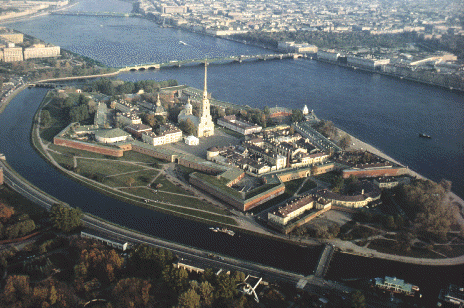
credit
2. Peter and Paul Cathedral
The Cathedral is within the Peter and Paul Fortress and like the fortress built under Peter the Great, from 1713 to 1733. Its 404 foot high tower is topped with a golden angel holding a cross that is an iconic symbol of St. Petersburg. The Cathedral holds regular religious services and is the final resting place for the remains of almost all of Russia’s Emperors and Empresses.
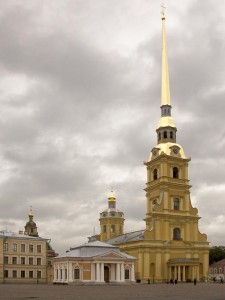
credit
3. Church of the Savior on Spilled Blood
The ‘Blood†in the name if the church refers to Alexander II who was assassinated on the site, next to Griboedov Canal, in 1881 by anarchists. His son, Alexander III built the church as a memorial to his father with construction beginning in 1883. The architecture stands out from the rest of St. Petersburg as it is built in a medieval Russian style, with its interior walls and ceilings entirely covered with intricate mosaics.
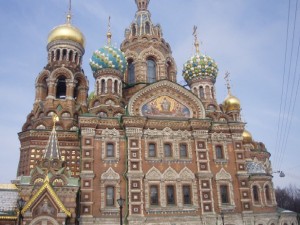
credit
4. The Old Saint Petersburg Stock Exchange
This building now houses the Central Naval Museum, the oldest Russian museum and the world’s largest naval museum.

credit
5. Kazan Cathedral
This Cathedral is located on the Nevsky Prospekt. It is modeled after St Peters Basilica in Rome and is the site of the first political demonstration in Russia. During communist times it was used as the pro-Marxist “Museum of History of Religion and Atheismâ€.
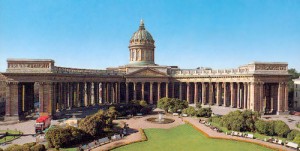
credit
6. Bronze Horseman
Situated in Senate Square, the Bronze Horseman is a statue of Peter the Great, sitting on his horse that is trampling a serpent, his arm reaching out to the Neva River. Constructed from 1770-1782 under orders of Catherine the Great, the statue has survived World War II and revolutions, and inspired the famous poem of the same name by Pushkin.
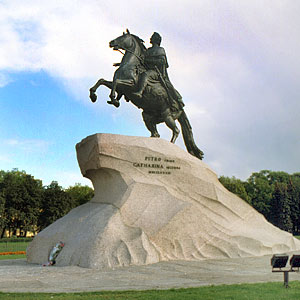
credit
7. Saint Petersburg Mosque
The mosque was opened in downtown St Petersburg 1913, at which time it was the largest in Europe. Its striking features include a dome and two minarets covered in light blue mosaics and a façade decorated with sayings from the Koran rendered in Arabian calligraphy.
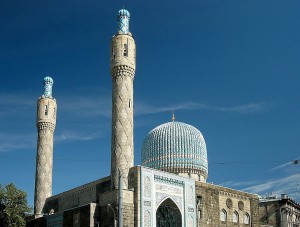
credit
8. Winter Palace
From 1732 until 1917 the Winter Palace was the official residence of Russia’s Tsars. It was stormed in 1917 in one of the most important acts of the Russian revolution. The huge scale reflects the might of the Russian Empire at the time, with almost 2,000 windows and 1,500 rooms. Today it is part of a complex housing the Hermitage Museum.
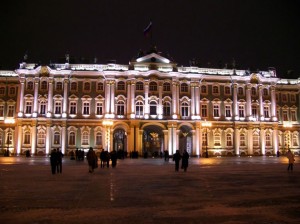
credit
9. Palace Square & Alexander Column
Palace Square is the central city square of St. Petersburg and the location of many important historical events including Bloody Sunday in 1905 and the October Revolution of 1917. The square features the Alexander Column, a 155 ft, 8 inches tall monument of a single column of red granite topped with a statue of an angel holding a cross. It is a memorial to Emperor Alexander who ruled Russia from 1801 to 1825 and who oversaw victory over Napoleon’s France.
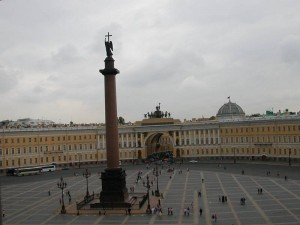
credit
10. Marble Palace
The neoclassical Marble Palace, located between Palace Quay and the Field of Mars, is notable for its construction of 32 different shades of marble. The palace currently holds permanent exhibits of the Russian State Museum.
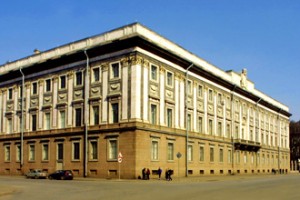
credit